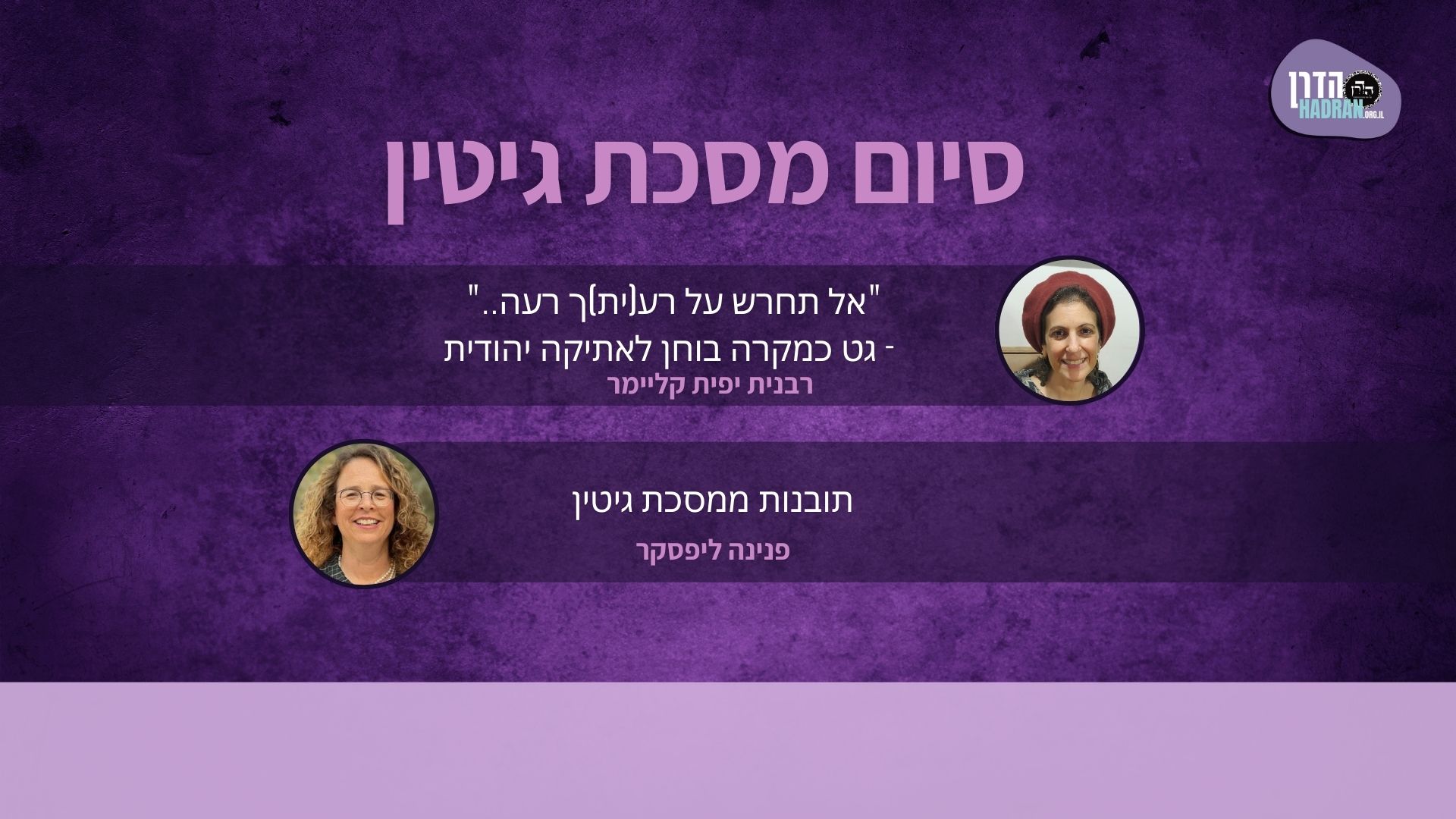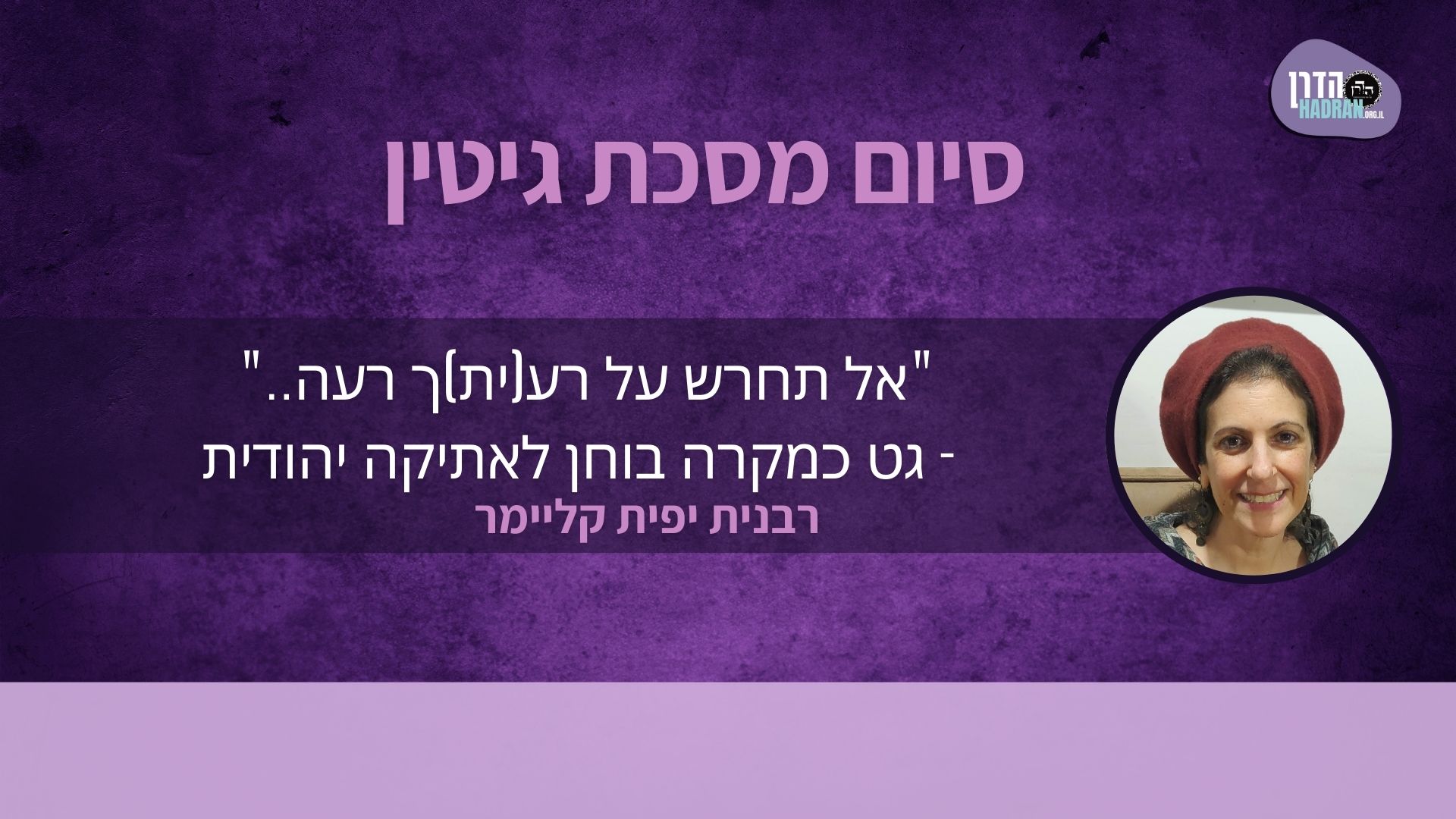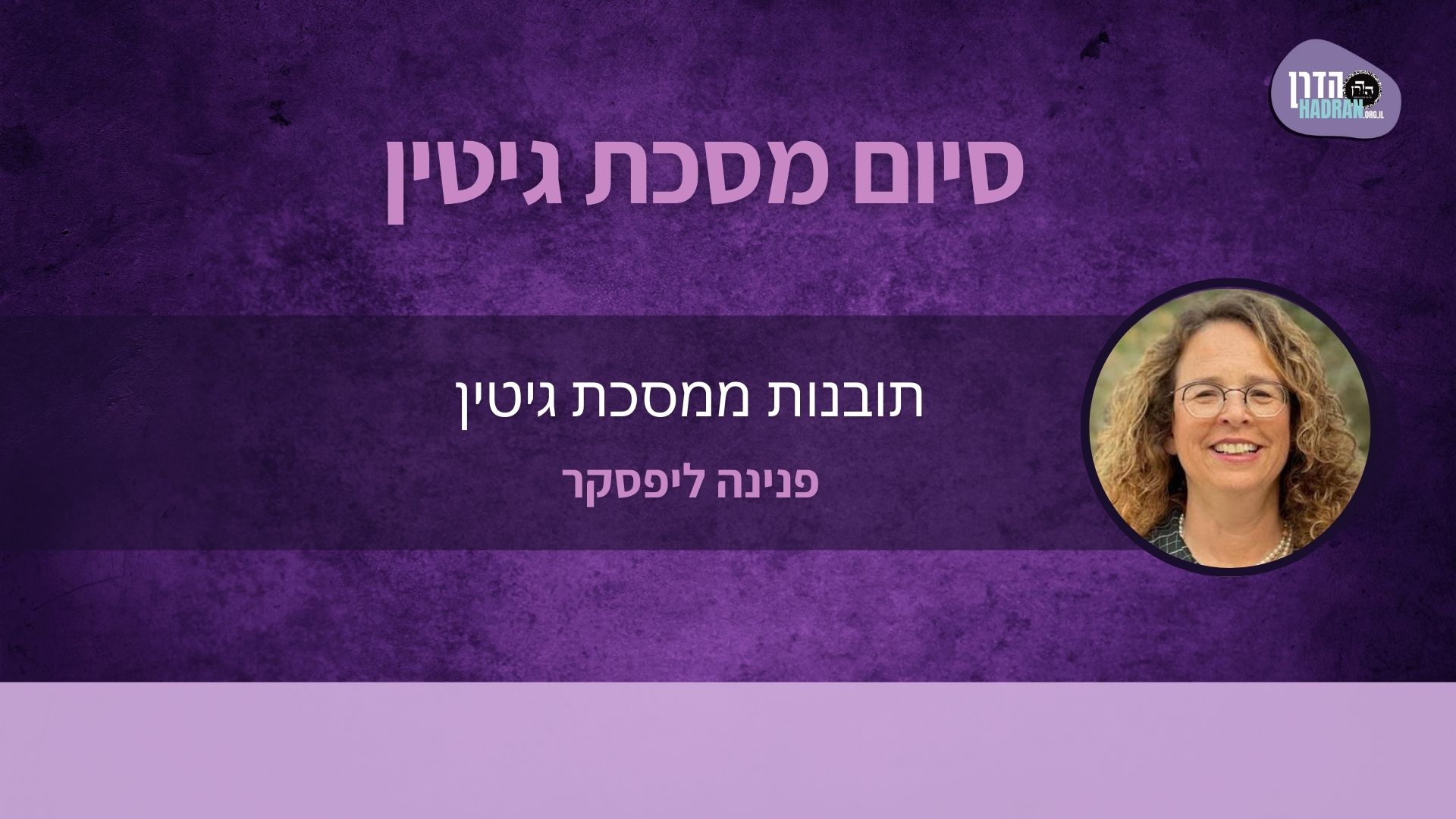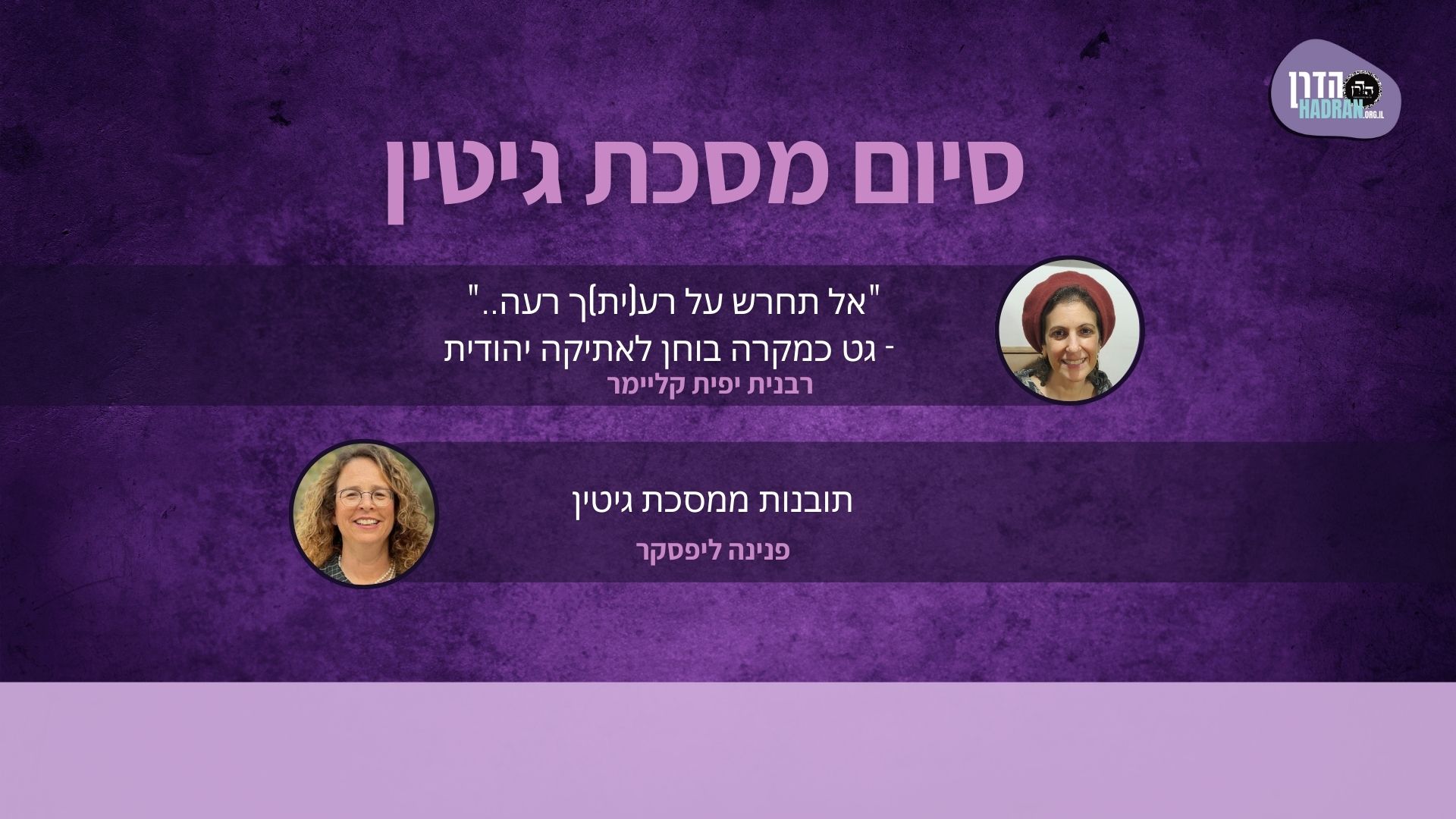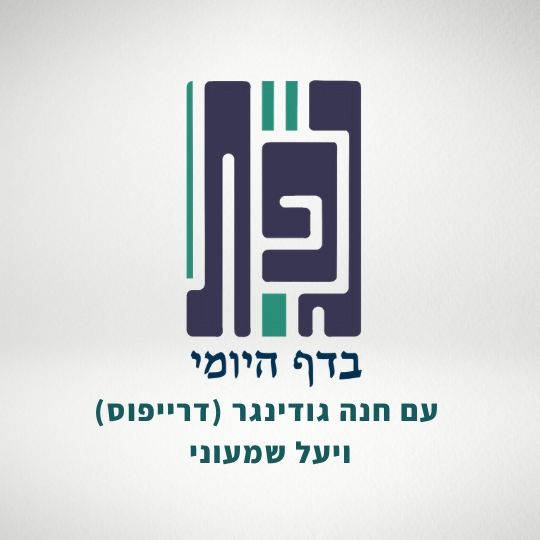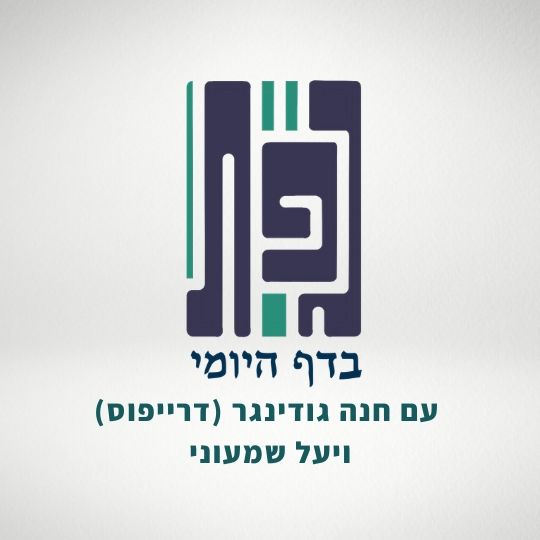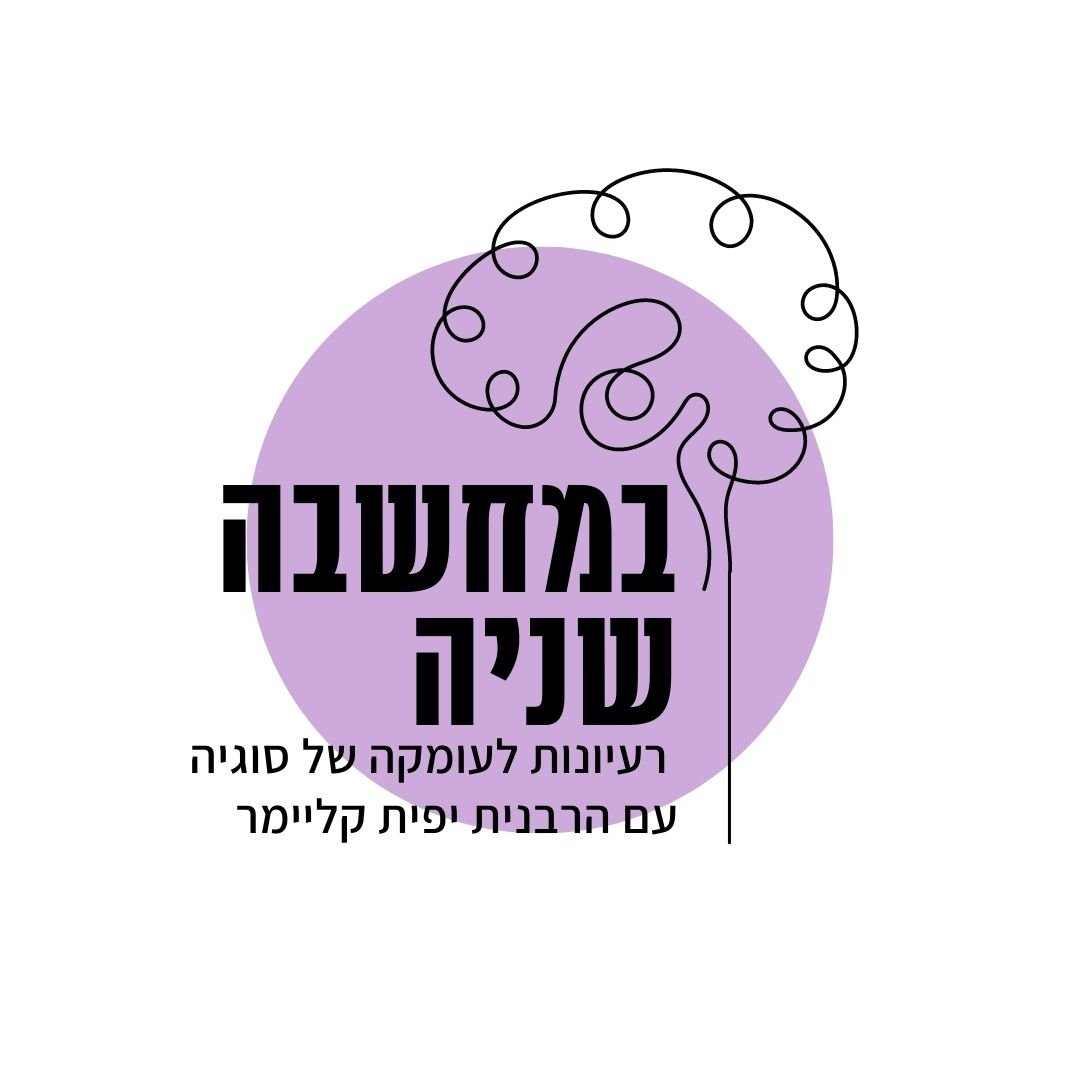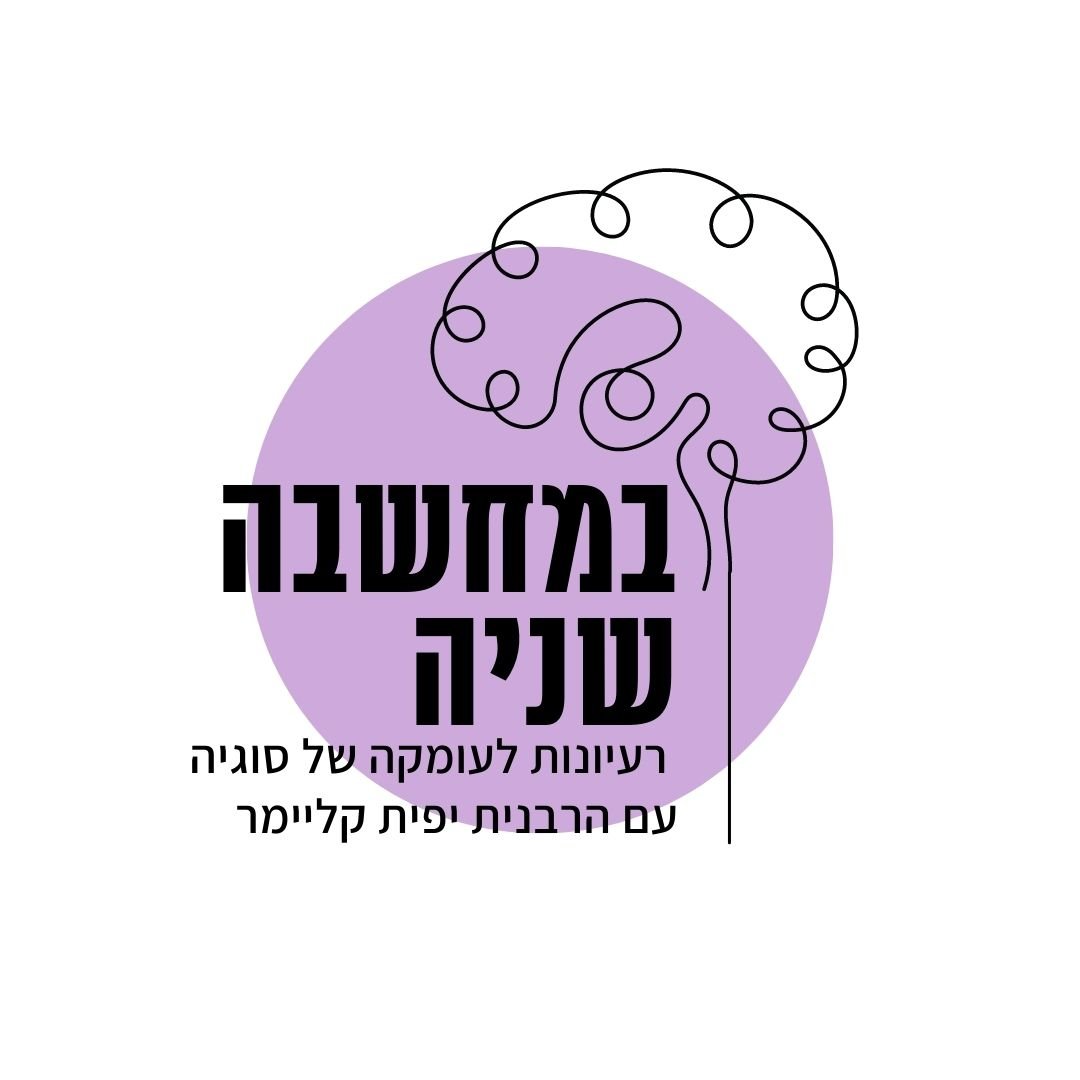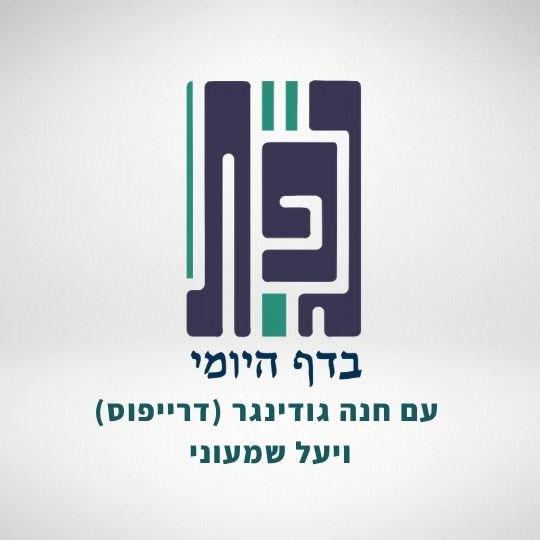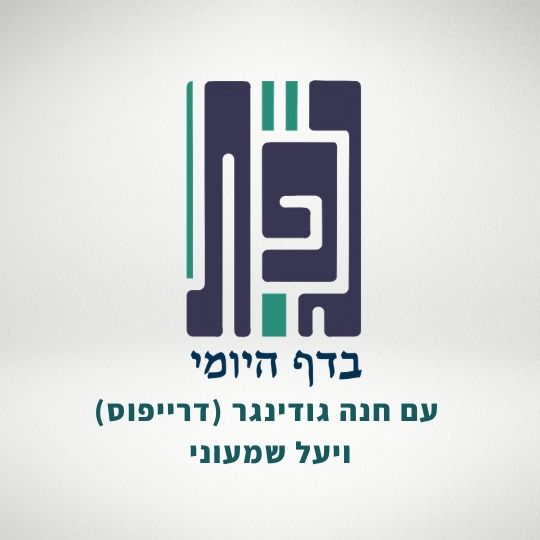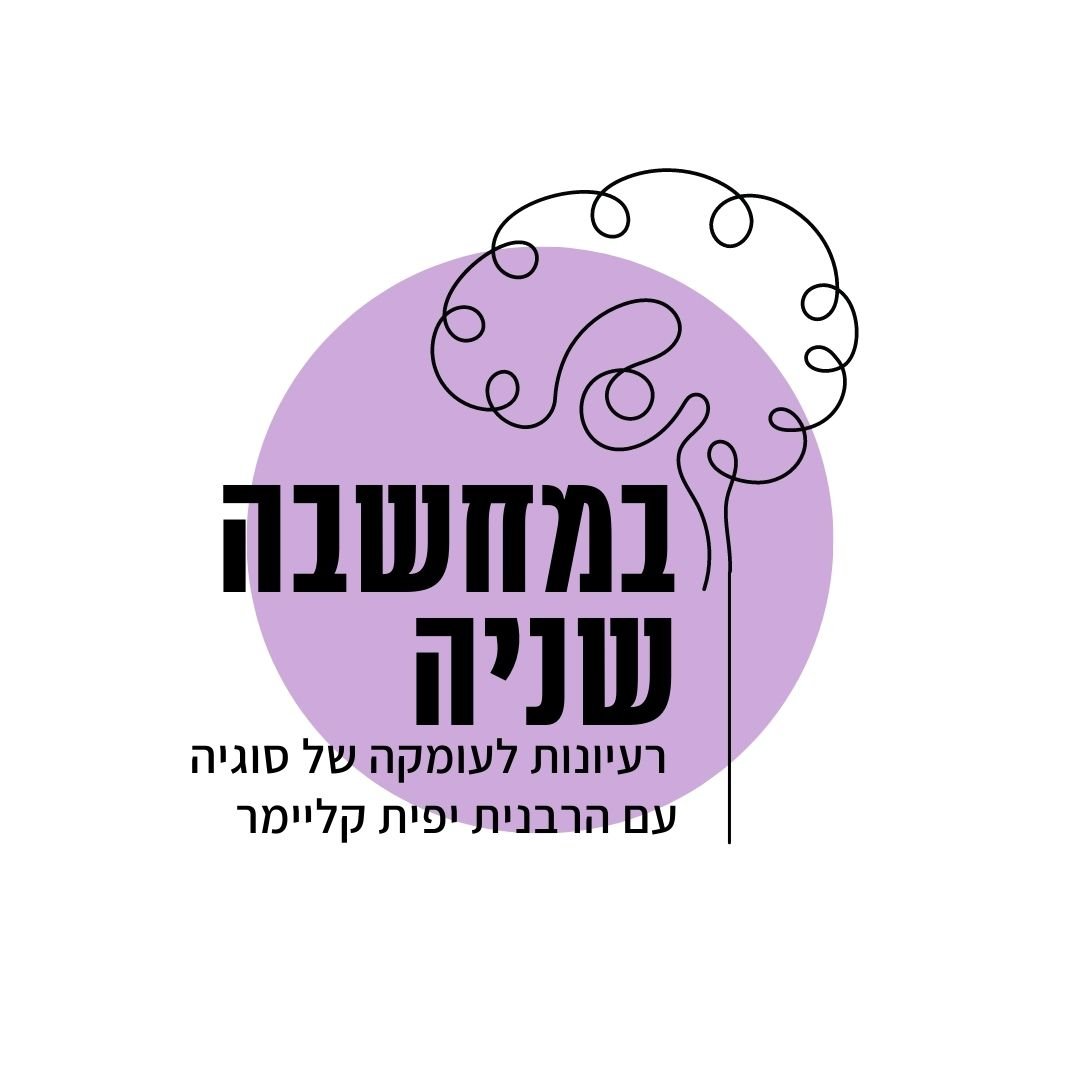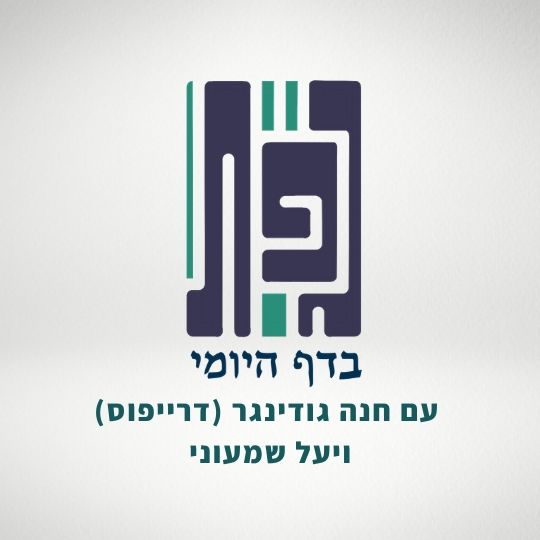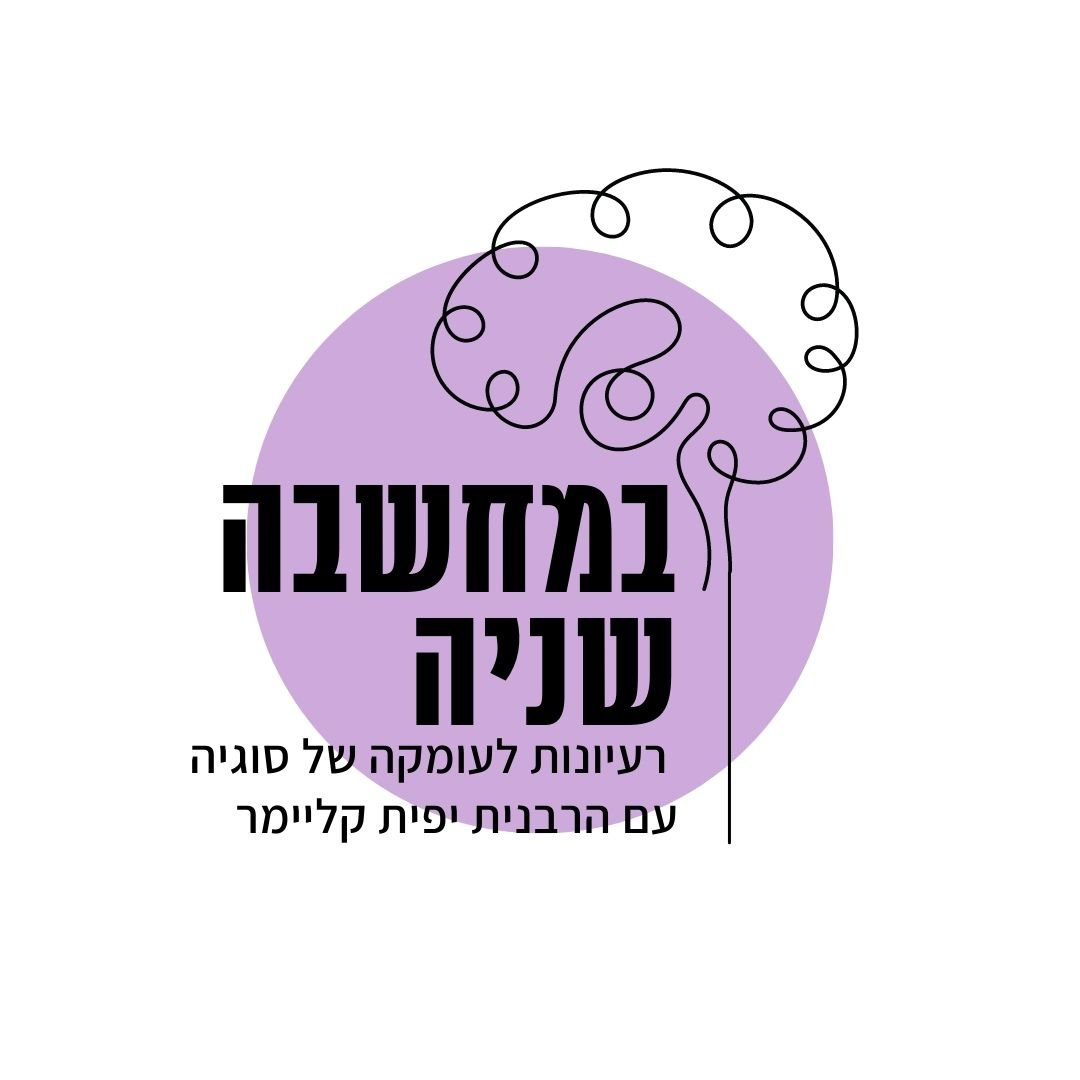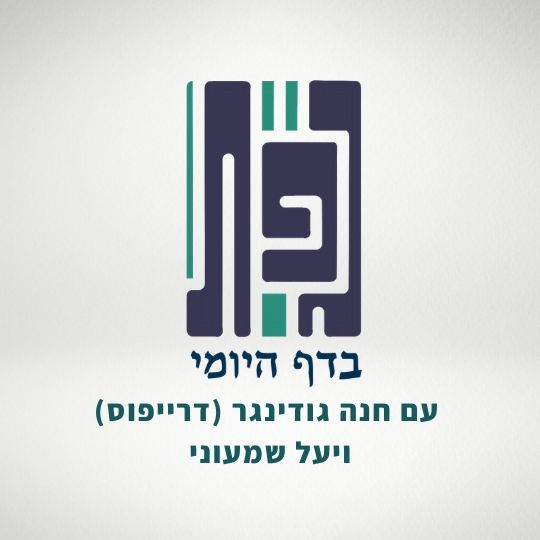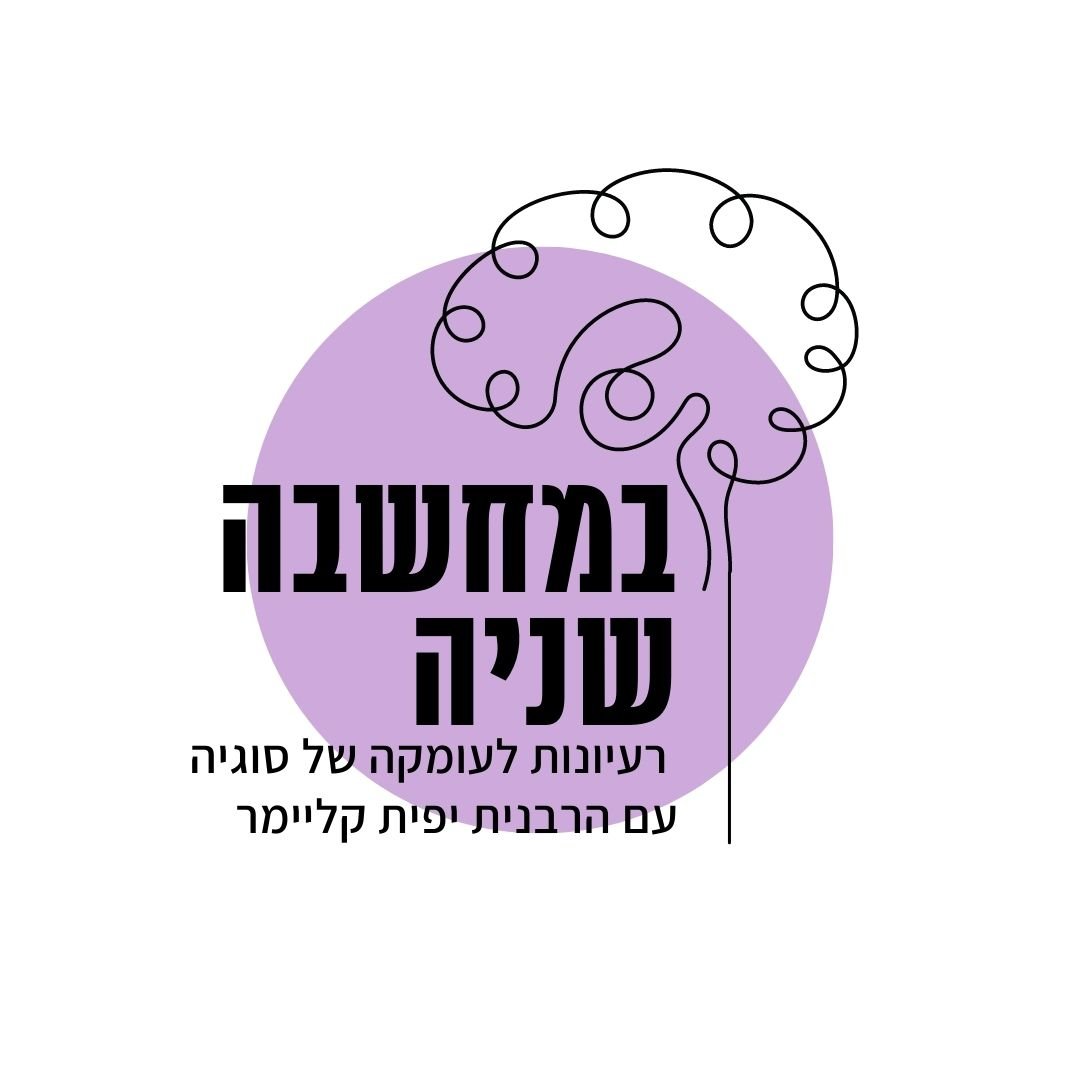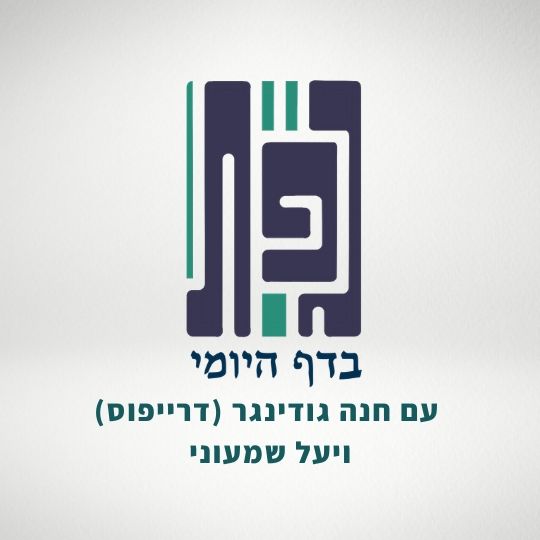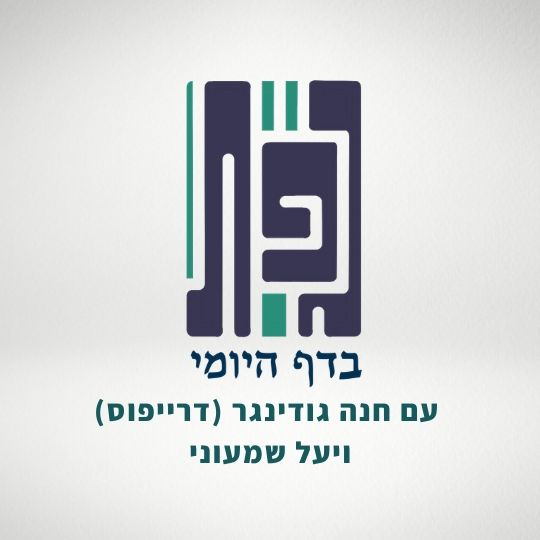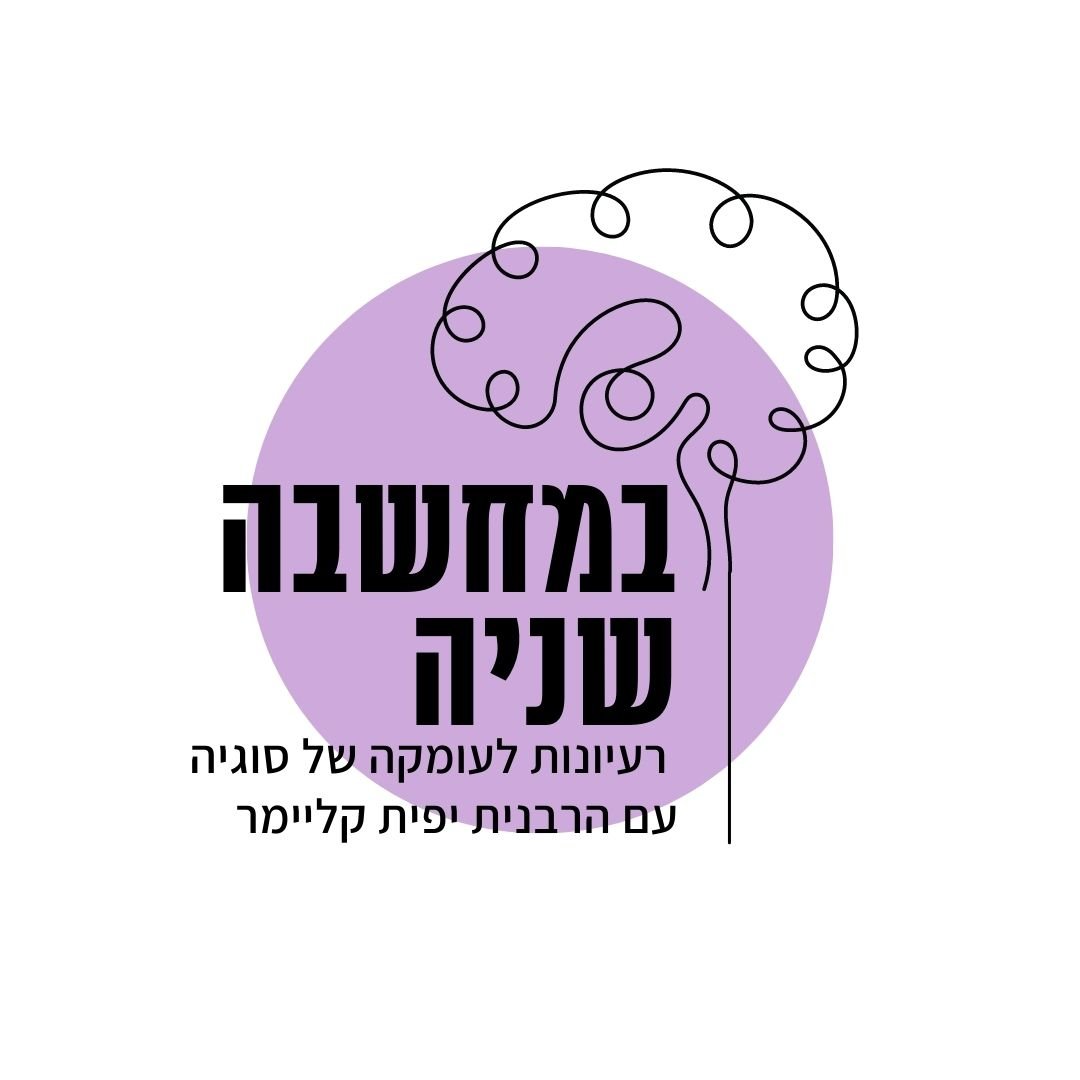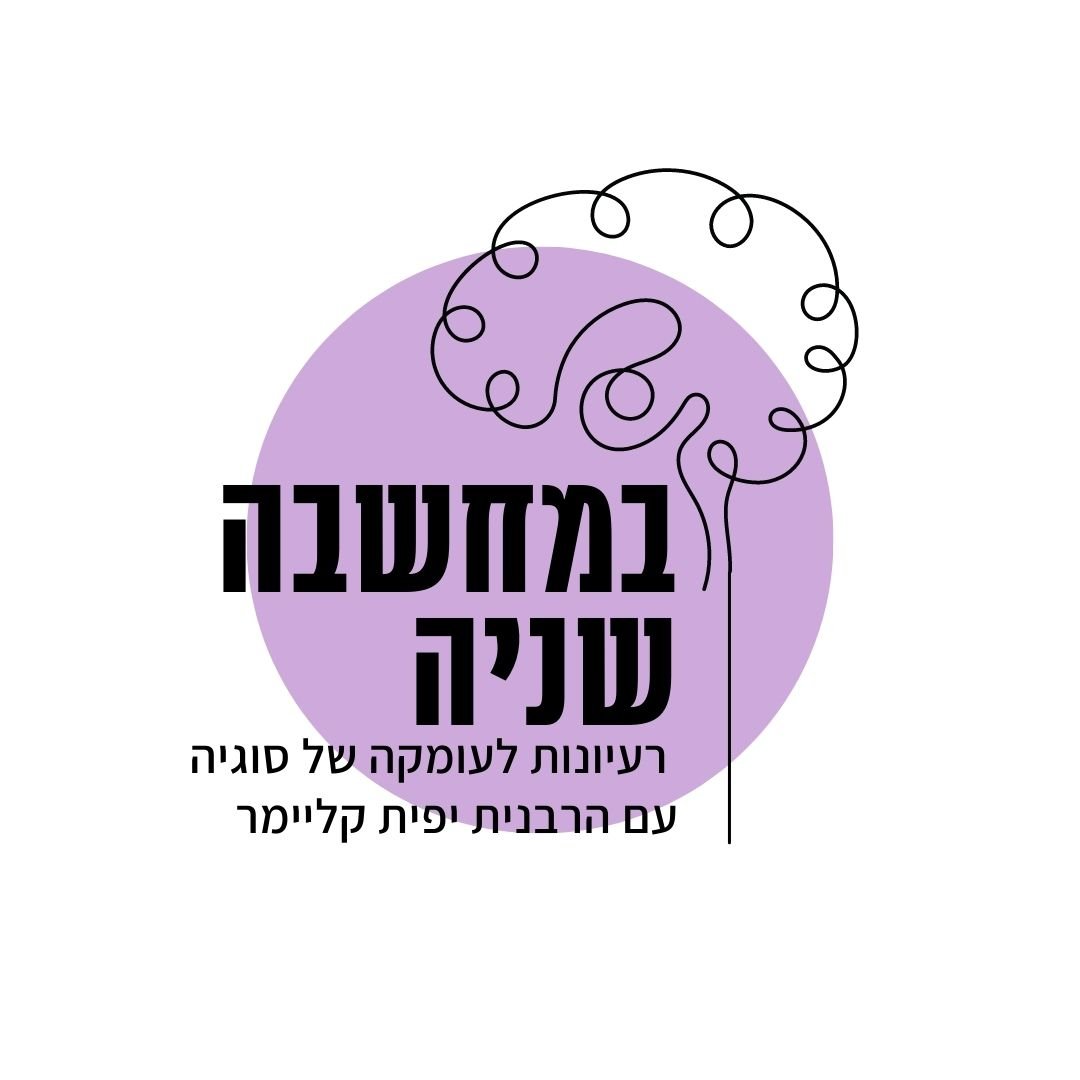הלימוד השבוע מוקדש ע”י רוברט ופאולה כהן לע”נ יוסף בן משה הכהן ז”ל. יוסף היה חזן שאהב מאוד לשיר, עבד קשה בחייו והיה מאוד מסור למשפחתו ולקהילה.
רוצה להקדיש שיעור?

כלים
הלימוד השבוע מוקדש ע”י רוברט ופאולה כהן לע”נ יוסף בן משה הכהן ז”ל. יוסף היה חזן שאהב מאוד לשיר, עבד קשה בחייו והיה מאוד מסור למשפחתו ולקהילה.
כלים
העמקה
רוצה להבין מה באמת קורה מתחת לפני השטח של הסוגיה?
שיעורים, פודקאסטים והרחבות של מיטב המורות שלנו יפתחו לך עוד זוויות וכיווני חשיבה.
חדשה בלימוד הגמרא?
זה הדף הראשון שלך? איזו התרגשות עצומה! יש לנו בדיוק את התכנים והכלים שיעזרו לך לעשות את הצעדים הראשונים ללמידה בקצב וברמה שלך, כך תוכלי להרגיש בנוח גם בתוך הסוגיות המורכבות ומאתגרות.
פסיפס הלומדות שלנו
גלי את קהילת הלומדות שלנו, מגוון נשים, רקעים וסיפורים. כולן חלק מתנועה ומסע מרגש ועוצמתי.
גיטין פז
אֲפִילּוּ זְמַן אֶחָד לְכוּלָּן נָמֵי הָוֵי טוֹפֶס, אֶלָּא הֵיכִי דָּמֵי כְּלָל? דְּכָתֵב ״אָנוּ פְּלוֹנִי וּפְלוֹנִי גֵּירַשְׁנוּ נְשׁוֹתֵינוּ פְּלוֹנִית וּפְלוֹנִית״.
Even if one date was written for all of them it is still considered a separate formula if the divorce of each couple is mentioned separately. Rather, what are the circumstances of the case of a general wording? It is a case where one wrote: We, so-and-so and so-and-so, have hereby divorced our wives so-and-so and so-and-so.
מַתְקֵיף לַהּ רַבִּי אַבָּא: לְרַבִּי יוֹחָנָן דְּאָמַר זְמַן אֶחָד לְכוּלָּן – זֶהוּ כְּלָל, לֵיחוּשׁ דִּלְמָא כִּי (חָתְמוּ) [חֲתִימִי] סָהֲדִי, אַבָּתְרָא הוּא דַּחֲתִימִי! מִי לָא תַּנְיָא: עֵדִים חֲתוּמִין עַל שְׁאֵילַת שָׁלוֹם בְּגֵט – פָּסוּל, חָיְישִׁינַן שֶׁמָּא עַל שְׁאֵילַת שָׁלוֹם חָתְמוּ?!
Rabbi Abba objects to this: According to Rabbi Yoḥanan, who says that when there is one date written for all of them that is a general wording, we should be concerned that perhaps when the witnesses signed the bill of divorce they intended to sign for only the last couple. Isn’t it taught in a baraita (Tosefta 9:9) that if witnesses are signed on a greeting that was written in a bill of divorce, i.e., after the formulation of the bill of divorce the scribe extended greetings to someone and the witnesses signed underneath, it is invalid, as we are concerned that perhaps they signed the greeting and not the bill of divorce?
לָאו אִיתְּמַר עֲלַהּ: אָמַר רַבִּי אֲבָהוּ, לְדִידִי מִפָּרְשָׁא לִי מִינֵּיהּ דְּרַבִּי יוֹחָנָן: ״שַׁאֲלוּ״ – פָּסוּל, ״וְשַׁאֲלוּ״ – כָּשֵׁר; הָכָא נָמֵי – דִּכְתִיב בֵּיהּ: ״פְּלוֹנִי וּפְלוֹנִי וּפְלוֹנִי״.
The Gemara answers: Wasn’t it stated with regard to this baraita that Rabbi Abbahu says: It was explained to me by Rabbi Yoḥanan that if the wording of the greeting is: Ask about the well-being of so-and-so, it is invalid, as perhaps the witnesses intended to witness only the greeting. But if the wording is: And ask about the well-being of so-and-so, with the conjunctive prefix vav, thereby making it appear as a continuation of the previous matter, it is valid, as the witnesses presumably signed the bill of divorce as well. Here too, it should be explained that this is a bill of divorce in which it is written: So-and-so has divorced his wife so-and-so, and so-and-so has divorced so-and-so, and so-and-so has divorced so-and-so, as the conjunctive prefix indicates continuation.
וְתוּ, לְרַבִּי יוֹחָנָן דְּאָמַר זְמַן לְכׇל אֶחָד – זֶהוּ טוֹפֶס; מַאי אִירְיָא מִשּׁוּם טוֹפֶס? וְתִיפּוֹק לֵיהּ דְּהָוֵה לֵיהּ נִכְתַּב בַּיּוֹם וְנֶחְתַּם בַּלַּיְלָה!
The Gemara raises another challenge: And furthermore, according to Rabbi Yoḥanan, who says that when there is a separate date written for each couple, that is considered a separate formula, why is it rendered invalid specifically due to it being considered a separate formula? Derive that it is invalid because it is like a bill of divorce that was written during the day and signed at night, which is invalid because it was signed on a different calendar date than it was written. Here too, since a different date was written for each couple, and the witnesses signed only after the last formula, they clearly signed only on that date, and with regard to the previous couples it is therefore an invalid bill of divorce.
אֲמַר לֵיהּ מָר קַשִּׁישָׁא בְּרֵיהּ דְּרַב חִסְדָּא לְרַב אָשֵׁי, הָכִי אָמְרִינַן מִשְּׁמֵיהּ דְּרַבִּי יוֹחָנָן: דִּכְתִיב בְּהוּ ״בְּחַד בְּשַׁבָּא, בְּחַד בְּשַׁבָּא״.
Mar Kashisha, son of Rav Ḥisda, said to Rav Ashi: We say the following explanation of the case in the name of Rabbi Yoḥanan: It is a case where it is written in the respective formulations: On Sunday, on Sunday. In other words, the date written in each bill of divorce is the same, as they were all written on the same date.
אֲמַר לֵיהּ רָבִינָא לְרַב אָשֵׁי, לְרֵישׁ לָקִישׁ דְּאָמַר: זְמַן אֶחָד לְכוּלָּן נָמֵי טוֹפֶס הָוֵי; וְהֵיכִי דָּמֵי כְּלָל – דִּכְתִיב בֵּיהּ הָכִי: ״אָנוּ פְּלוֹנִי וּפְלוֹנִי גֵּירַשְׁנוּ נְשׁוֹתֵינוּ פְּלוֹנִית וּפְלוֹנִית״; נִמְצְאוּ שְׁתֵּי נָשִׁים מִתְגָּרְשׁוֹת בְּגֵט אֶחָד, וְהַתּוֹרָה אָמְרָה: ״וְכָתַב לָהּ״ – וְלֹא לָהּ וְלַחֲבֶרְתָּהּ!
Ravina said to Rav Ashi: According to Reish Lakish, who says that if the divorce of each couple is mentioned separately, then even if one date was written for all of them it is still considered a separate formula, and he explains that what are the circumstances of the case of a general wording; a case where the following wording is written in the bill of divorce: We, so-and-so and so-and-so, have hereby divorced our wives so-and-so and so-and-so. Accordingly, two women are found being divorced with one bill of divorce. All of these women are divorced with the same bill of divorce that contains a list of several couples. And the Torah said: “And he writes her” (Deuteronomy 24:1), and it is derived from this phrase that he cannot write it both for her and for another woman. Rather, each woman requires a separate bill of divorce.
דַּהֲדַר כְּתַב: ״פְּלוֹנִי גֵּירַשׁ פְּלוֹנִית, וּפְלוֹנִי גֵּירַשׁ פְּלוֹנִית״.
The Gemara answers: It is valid because he then wrote after the general formulation: So-and-so has divorced so-and-so, and so-and-so has divorced so-and-so.
אֲמַר לֵיהּ רָבִינָא לְרַב אָשֵׁי, וּמַאי שְׁנָא מֵהָא דְּתַנְיָא: הַכּוֹתֵב כׇּל נְכָסָיו לִשְׁנֵי עֲבָדָיו – קָנוּ, וּמְשַׁחְרְרִין זֶה אֶת זֶה?
Ravina said to Rav Ashi: And in what way is this case different from that which is taught in a baraita: With regard to one who writes a document granting all of his property to his two slaves, they both acquire the property and must emancipate each other? Since the slaves are included in the property, by acquiring the property together they each have ownership over half of the other slave. Consequently, they must emancipate each other. Since the halakhot of emancipation of slaves are compared to the halakhot of divorce, it can be proven from here that one bill of divorce can be written for two wives.
וְלָאו אוֹקֵימְנָא בִּשְׁנֵי שְׁטָרוֹת?!
The Gemara answers: But didn’t we establish that that baraita is referring to a case where the master wrote two documents, one for each slave, stating that he is giving him all of his property, and he gave them to them simultaneously? Certainly each slave needs his own bill of emancipation.
תַּנְיָא כְּווֹתֵיהּ דְּרַבִּי יוֹחָנָן, תַּנְיָא כְּווֹתֵיהּ דְּרֵישׁ לָקִישׁ.
It is taught in a baraita in accordance with the opinion of Rabbi Yoḥanan, and similarly it is taught in a baraita in accordance with the opinion of Reish Lakish.
תַּנְיָא כְּווֹתֵיהּ דְּרַבִּי יוֹחָנָן: חֲמִשָּׁה שֶׁכָּתְבוּ בְּתוֹךְ הַגֵּט: ״אִישׁ פְּלוֹנִי מְגָרֵשׁ פְּלוֹנִית, וּפְלוֹנִי פְּלוֹנִית, וּפְלוֹנִי פְּלוֹנִית״, וּזְמַן אֶחָד לְכוּלָּן, וְהָעֵדִים מִלְּמַטָּה – כּוּלָּן כְּשֵׁרִים, וְתִנָּתֵן לְכׇל אַחַת וְאַחַת.
It is taught in a baraita in accordance with the opinion of Rabbi Yoḥanan as follows: With regard to five men who wrote in the bill of divorce: So-and-so hereby divorces so-and-so, and so-and-so divorces so-and-so, and so-and-so divorces so-and-so, and wrote one date for all of them, and the witnesses signed below, in this case all of them are valid; and this document must be handed to each and every one of the women mentioned in it.
זְמַן לְכׇל אֶחָד וְאֶחָד וְהָעֵדִים מִלְּמַטָּה – אֶת שֶׁהָעֵדִים נִקְרָאִים עִמּוֹ, כָּשֵׁר. רַבִּי יְהוּדָה בֶּן בְּתֵירָא אוֹמֵר: אִם יֵשׁ רֶיוַח בֵּינֵיהֶן – פָּסוּל, וְאִם לָאו – כָּשֵׁר; שֶׁאֵין זְמַן מַפְסִיקָן.
Nevertheless, if a separate date is written for each and every one and the witnesses signed below, the bill of divorce with which the witnesses’ signatures are read is valid. Rabbi Yehuda ben Beteira says: If there is space between them it is invalid, as the witnesses’ signatures appear to be referring only to the last couple. But if there is not a space it is valid, as the date written for each couple does not separate between them. Rather, they are still considered the same bill of divorce with regard to the witnesses’ signatures.
תַּנְיָא כְּווֹתֵיהּ דְּרֵישׁ לָקִישׁ: חֲמִשָּׁה שֶׁכָּתְבוּ כְּלָל בְּתוֹךְ הַגֵּט – ״אָנוּ פְּלוֹנִי וּפְלוֹנִי גֵּירַשְׁנוּ נְשׁוֹתֵינוּ פְּלוֹנִית וּפְלוֹנִית, פְּלוֹנִי גֵּירַשׁ פְּלוֹנִית וּפְלוֹנִי גֵּירַשׁ פְּלוֹנִית״; וּזְמַן אֶחָד לְכוּלָּן, וְהָעֵדִים מִלְּמַטָּה – כּוּלָּן כְּשֵׁרִין, וְתִנָּתֵן לְכׇל אַחַת וְאַחַת.
It is taught in a baraita in accordance with the opinion of Reish Lakish: With regard to five men who wrote a general wording in the bill of divorce: We, so-and-so and so-and-so, have hereby divorced our wives so-and-so and so-and-so; so-and-so has divorced so-and-so, and so-and-so has divorced so-and-so, and they wrote one date for all of them, and the witnesses signed below, in this case all of them are valid; and it must be handed to each and every woman.
זְמַן לְכׇל אֶחָד וְאֶחָד, וְרֶיוַח לְכׇל אֶחָד וְאֶחָד, וְהָעֵדִים מִלְּמַטָּה – אֶת שֶׁהָעֵדִים נִקְרָאִין עִמּוֹ, כָּשֵׁר. רַבִּי מֵאִיר אוֹמֵר: אַף עַל פִּי שֶׁאֵין רֶיוַח בֵּינֵיהֶם – פָּסוּל, שֶׁהַזְּמַן מַפְסִיקָן.
If a separate date was written for each and every one, and there is a space for each and every one, and the witnesses signed below, only the one with which the witnesses’ signatures are read is valid; the others are not. Rabbi Meir says: Even if there is no space between them, the upper ones are invalid, as the date separates them.
וְרֵישׁ לָקִישׁ – מַאי אִירְיָא זְמַן לְכׇל אֶחָד וְאֶחָד? הָא אָמַר: זְמַן אֶחָד לְכוּלָּן נָמֵי טוֹפֶס הָוֵי!
The Gemara asks: And according to Reish Lakish, why is the baraita referring specifically to a case in which a separate date was written for each and every one? Didn’t he say that if one date was written for all of them it is still considered a separate formula?
הָנֵי מִילֵּי הֵיכָא דְּלָא עָרְבִינְהוּ מֵעִיקָּרָא; אֲבָל הָכָא, דְּעָרְבִינְהוּ מֵעִיקָּרָא, אִי פָּלֵיג לְהוּ זְמַן – אִין, אִי לָא – לָא.
The Gemara answers: This matter applies where he did not merge them at the outset but instead wrote the divorce of each couple separately. But here, he merged them at the outset, writing: So-and-so and so-and-so have hereby divorced their wives so-and-so and so-and-so. Therefore, if the date separates them they are considered to be separate bills of divorce, and if not, then they are not considered separate bills of divorce.
מַתְנִי׳ שְׁנֵי גִיטִּין שֶׁכְּתָבָן זֶה בְּצַד זֶה, וּשְׁנַיִם עֵדִים עִבְרִים בָּאִים מִתַּחַת זֶה לְתַחַת זֶה, וּשְׁנַיִם עֵדִים יְוָנִים בָּאִים מִתַּחַת זֶה לְתַחַת זֶה – אֶת שֶׁהָעֵדִים הָרִאשׁוֹנִים נִקְרָאִין עִמּוֹ, כָּשֵׁר.
MISHNA: With regard to two bills of divorce that a scribe wrote on the same paper one next to the other, and the signatures of two Hebrew witnesses, i.e., witnesses who signed in Hebrew from right to left, extend from underneath this bill of divorce on the right to underneath that bill of divorce on the left, and the signatures of two Greek witnesses, i.e., who signed in Greek from left to right, extend from underneath that bill of divorce on the left to underneath this bill of divorce on the right, the bill of divorce with which the names of the first two witnesses are read [nikra’in] is valid. The other bill of divorce is invalid, as it is not considered signed by these witnesses.
עֵד אֶחָד עִבְרִי וְעֵד אֶחָד יְוָנִי, וְעֵד אֶחָד עִבְרִי וְעֵד אֶחָד יְוָנִי, בָּאִין מִתַּחַת זֶה לְתַחַת זֶה – שְׁנֵיהֶם פְּסוּלִין.
If one witness signed in Hebrew from right to left, and one witness signed beneath him in Greek from left to right, and underneath that signature one witness signed in Hebrew, and beneath him one witness signed in Greek, with the signatures extending from underneath this bill of divorce to underneath that bill of divorce, both bills of divorce are invalid.
גְּמָ׳ וְלִיתַּכְשַׁר הַאי בִּ״רְאוּבֵן״, וְהַאי בְּ״בֶן יַעֲקֹב עֵד״, דְּהָא תְּנַן: ״בֶּן אִישׁ פְּלוֹנִי עֵד״ – כָּשֵׁר!
GEMARA: It is stated in the first case of the mishna that the bill of divorce under which the names of the first two witnesses appear is valid and the other is not, even though the signatures extend to that bill of divorce as well. The Gemara says: But let this bill of divorce be validated by the name Reuven alone, and let that bill of divorce be validated by the continuation: Son of Ya’akov, witness, which can be considered a separate signature. Didn’t we learn in a subsequent mishna (87b) that a signature that reads: Son of so-and-so, witness, is valid?
דִּכְתִיב: ״רְאוּבֵן בֶּן״ אַקַּמָּא, וְ״יַעֲקֹב עֵד״ אַבָּתְרָא.
The Gemara answers: It is a case where the words: Reuven, son of, are written on the side of the first bill of divorce, and the words: Ya’akov, witness, are written on the side of the latter bill of divorce, indicating that it is one signature.
וְלִיתַּכְשַׁר הַאי בִּ״רְאוּבֵן בֶּן״, וְלִיתַּכְשַׁר הַאי בְּ״יַעֲקֹב עֵד״, דְּהָא תְּנַן: ״אִישׁ פְּלוֹנִי עֵד״ – כָּשֵׁר!
The Gemara says: But let this bill of divorce, on the first, left-hand, side, be validated by the words: Reuven, son of, and let that bill of divorce on the other, right-hand, side be validated by the words: Ya’akov, witness. Didn’t we learn in the same mishna that a signature that reads: So-and-so, witness, without the father’s name, is valid?
דְּלָא כְּתִיב ״עֵד״. וְאִיבָּעֵית אֵימָא: לְעוֹלָם דִּכְתִיב ״עֵד״, וּדְיָדְעִינַן בְּהָא חֲתִימָה דְּלָאו דְּיַעֲקֹב הוּא.
The Gemara answers: It is a case where the word witness is not written. The latter side includes only a name, which is not sufficient. And if you wish, say: Actually, it is a case where the expression: Ya’akov, witness, is written underneath the second bill of divorce; but it is a case where we know that this signature is not Ya’akov’s. Evidently it is part of the signature of Reuven, son of Ya’akov, and cannot serve as a separate signature for the second bill of divorce.
וְדִלְמָא בִּשְׁמָא דַאֲבוּהּ חָתֵים! לָא שָׁבֵיק אִינִישׁ שְׁמֵיהּ וְחָתֵים שְׁמָא דַאֲבוּהּ.
The Gemara asks: But perhaps Reuven signed both bills of divorce, and he signed the second one with his father’s name? The Gemara answers: One does not leave out his own name and instead sign in the name of his father.
וְדִילְמָא סִימָנָא שַׁוְּיֵיהּ – דְּהָא רַב צָיֵיר כְּווֹרָא, רַבִּי חֲנִינָא – חֲרוּתָא, רַב חִסְדָּא – סָמֶךְ, רַב הוֹשַׁעְיָא – עַיִן, רַבָּה בַּר רַב הוּנָא צָיֵיר מָכוּתָא!
The Gemara asks: But perhaps he made his father’s name a symbol for his own signature? As Rav would draw a fish instead of signing his name, Rabbi Ḥanina would draw a date palm, Rav Ḥisda would write a samekh, Rav Hoshaya would write an ayin, and Rabba bar Rav Huna would draw a sail.
לָא חֲצִיף אִינִישׁ לְשַׁוּוֹיֵי לִשְׁמָא דַאֲבוּהּ סִימָנָא.
The Gemara answers: A person would not be so brazen as to make his father’s name a symbol. Therefore, it is assumed that the word Ya’akov is a continuation of Reuven’s signature on the first bill of divorce, not a separate signature on the second bill of divorce.
וְלִיתַּכְשַׁר הַאי בִּשְׁנֵי עֵדִים עִבְרִים, וְלִיתַּכְשַׁר הַאי בִּשְׁנֵי עֵדִים יְוָנִים – דִּתְנַן: גֵּט שֶׁכְּתָבוֹ עִבְרִית וְעֵדָיו יְוָנִית, יְוָנִית וְעֵדָיו עִבְרִית – כָּשֵׁר!
The Gemara raises a different question: But let this bill of divorce be validated by the two Hebrew witnesses, and let that bill of divorce be validated by the two Greek witnesses, as we learned in the subsequent mishna that a bill of divorce that was written in Hebrew and its witnesses signed in Greek, or that was written in Greek and its witnesses signed in Hebrew, is valid.
וְכִי תֵּימָא, כֵּיוָן דְּמוּפְלָג בִּשְׁנֵי שִׁיטִין – לָא; וְהָאָמַר חִזְקִיָּה: מִלְּאָהוּ בִּקְרוֹבִים – כָּשֵׁר!
And if you would say that since the signatures of the witnesses of the second bill of divorce are two lines away from the bill of divorce itself, it is not valid, as that is the halakha with regard to a document that has a gap between the text and the signatures, but didn’t Ḥizkiyya say that if the gap was filled, even with the signatures of relatives who are disqualified from serving as witnesses, it is valid?
הָא תָּנֵי זְעֵירִי: שְׁנֵיהֶן כְּשֵׁרִין. וְתַנָּא דִּידַן – דִּלְמָא גּוּנְדָּלִית חֲתֻים, וְכוּלְּהוּ אַחַד הוּא דַּחֲתִימִי.
The Gemara comments: Ze’eiri in fact teaches that both of the two bills of divorce are valid, not only the one beneath which the names of the first two witnesses appear. The Gemara asks: And what is the reasoning of the tanna of our mishna, who does not agree with this ruling? The Gemara answers: He is concerned that perhaps the bottom two witnesses signed in reverse [gundalit]. For example, if the top two signatures are in Hebrew, perhaps the witnesses who signed in Greek reversed the word order of their signatures, imitating the Hebrew style, and in actuality all of the witnesses signed one bill of divorce.
עֵד אֶחָד עִבְרִי וְעֵד אֶחָד יְוָנִי. וְלִיתַּכְשַׁר הַאי בְּעֵד אֶחָד עִבְרִי וְעֵד אֶחָד יְוָנִי, וְהַאי בְּעֵד אֶחָד עִבְרִי וְעֵד אֶחָד יְוָנִי – דְּהָא תְּנַן: עֵד אֶחָד עִבְרִי וְעֵד אֶחָד יְוָנִי – כָּשֵׁר!
§ It is stated in the mishna that if one witness signed in Hebrew and then one witness signed in Greek, and then one more witness signed in Hebrew and one in Greek, both bills of divorce are invalid. The Gemara asks: But let this bill of divorce be validated by one Hebrew witness and one Greek witness, and that bill of divorce be validated by the other pair composed of one Hebrew witness and one Greek witness. Didn’t we learn in the subsequent mishna that a bill of divorce that was signed by one witness in Hebrew and one witness in Greek is valid?
הָא תָּנֵי זְעֵירִי: שְׁנֵיהֶם כְּשֵׁרִים. וְתַנָּא דִּידַן – דִּלְמָא גּוּנְדָּלִית חֲתֻים; וּתְלָתָא אַחַד, וְחַד אַחַד.
The Gemara answers: Ze’eiri in fact teaches that both of them are valid. The Gemara asks: And what is the reasoning of the tanna of our mishna? The Gemara answers: He is concerned that perhaps they signed in reverse, i.e., perhaps one of the witnesses who signed in Greek reversed the word order of his signature, and in actuality he signed the other bill of divorce. Consequently, three witnesses signed one bill of divorce and only one witness signed the other one. Therefore, they are both rendered invalid.
מַתְנִי׳ שִׁיֵּיר מִקְצָת הַגֵּט וּכְתָבוֹ בְּדַף הַשֵּׁנִי, וְהָעֵדִים מִלְּמַטָּה – כָּשֵׁר. חָתְמוּ עֵדִים בְּרֹאשׁ הַדַּף, מִן הַצַּד, אוֹ מֵאַחֲרָיו; בְּגֵט פָּשׁוּט – פָּסוּל.
MISHNA: If a scribe left out part of the bill of divorce and wrote it in the second column, i.e., the bill of divorce is written in two columns on one paper, and the signatures of the witnesses are beneath the second column, it is a valid bill of divorce. If the witnesses signed at the top of the column, on the side, or on the back of an ordinary, non-folded bill of divorce, it is invalid.
הִקִּיף רֹאשׁוֹ שֶׁל זֶה בְּצַד רֹאשׁוֹ שֶׁל זֶה, וְהָעֵדִים בָּאֶמְצַע – שְׁנֵיהֶם פְּסוּלִין. סוֹפוֹ שֶׁל זֶה בְּצַד סוֹפוֹ שֶׁל זֶה, וְהָעֵדִים בָּאֶמְצַע – אֶת שֶׁהָעֵדִים נִקְרִין עִמּוֹ, כָּשֵׁר. רֹאשׁוֹ שֶׁל זֶה בְּצַד סוֹפוֹ שֶׁל זֶה, וְהָעֵדִים בָּאֶמְצַע – אֶת שֶׁהָעֵדִים נִקְרִין בְּסוֹפוֹ, כָּשֵׁר.
If the scribe placed the top of this bill of divorce next to the top of that bill of divorce so that both are written in the same column but with the text in opposite directions, and the witnesses signed in the middle, between the bills of divorce, both bills of divorce are invalid. If he placed the end of this bill of divorce next to the end of that bill of divorce, and the witnesses signed in the middle between them, the bill of divorce with which the witnesses’ signatures are read, i.e., the bill that is written in the same direction as the signatures, is valid. If he placed the top of this bill of divorce next to the end of that bill of divorce, and the witnesses signed in the middle, the bill of divorce at the end of which the witnesses are read, i.e., the upper bill of divorce, is valid.
גֵּט שֶׁכְּתָבוֹ עִבְרִית וְעֵדָיו יְווֹנִית; יְווֹנִית וְעֵדָיו עִבְרִית; עֵד אֶחָד עִבְרִי וְעֵד אֶחָד יְווֹנִי; כָּתַב סוֹפֵר וְעֵד – כָּשֵׁר.
With regard to a bill of divorce that was written in Hebrew and its witnesses signed in Greek, or that was written in Greek and its witnesses signed in Hebrew, or in which one witness signed in Hebrew and one witness signed in Greek, or if a bill of divorce has the writing of a scribe, and the scribe identifies his handwriting, and one witness verifies his signature, it is valid as though two witnesses testified to ratify their signatures.
״אִישׁ פְּלוֹנִי, עֵד״ – כָּשֵׁר. ״בֶּן אִישׁ פְּלוֹנִי, עֵד״ – כָּשֵׁר; ״אִישׁ פְּלוֹנִי בֶּן אִישׁ פְּלוֹנִי״, וְלֹא כָּתַב ״עֵד״ – כָּשֵׁר, וְכָךְ הָיוּ נְקִיֵּי הַדַּעַת שֶׁבִּירוּשָׁלַיִם עוֹשִׂין. כָּתַב חֲנִיכָתוֹ וַחֲנִיכָתָהּ – כָּשֵׁר.
As for the wording of the signature, if a witness signed: So-and-so, witness, without mentioning his father’s name, it is valid. Similarly, if he did not write his name and instead wrote: Son of so-and-so, witness, it is valid. If he wrote: So-and-so, son of so-and-so, but did not write the word witness, it is valid. And this is what the scrupulous people of Jerusalem would do, i.e., they would sign without the word witness. As for the names of the husband and wife, if the scribe wrote his surname [ḥanikhato] or nickname and her surname or nickname, it is valid.
גְּמָ׳ וְלֵיחוּשׁ דִּלְמָא הָנֵי תְּרֵי גִּיטֵּי הֲווֹ; וְאִיתְרְמִי לֵיהּ זְמַן דְּקַמָּא, וְעֵדִים דְּבָתְרָא; וְגַזְיֵיהּ לִזְמַן דְּבָתְרָא וְעֵדִים דְּקַמָּא!
GEMARA: With regard to a bill of divorce that is written in two columns, let us be concerned that perhaps these were two adjacent bills of divorce, the second one higher up on the page than the first, and the date written at the top of the first bill of divorce and the signatures of the witnesses written at the bottom of the latter bill of divorce happened to be written next to each other, and someone cut out the date of the latter bill of divorce and the signatures of the witnesses of the first so that it appears to be a single bill of divorce written in two columns.
אָמַר רַבִּי אַבָּא אָמַר רַב: כְּשֶׁיֵּשׁ רֶיוַח מִלְּמַטָּה. וְדִלְמָא זְמַן דְּבָתְרָא מִיגָּז גַּזְיֵיהּ! כִּדְאָמַר רַבִּי אַבָּא אָמַר רַב: כְּשֶׁיֵּשׁ רֶיוַח מִלְּמַטָּה;
Rav Abba says that Rav says: It is a case where there is space on the paper below the first bill of divorce, so it is clear that nothing was cut out. The Gemara asks: And perhaps he cut out the date of the latter bill of divorce, making it look like a continuation of the first one, which was actually never finished? The Gemara answers: Just as Rabbi Abba says that Rav says that it is a case where there is space below the first bill of divorce,
